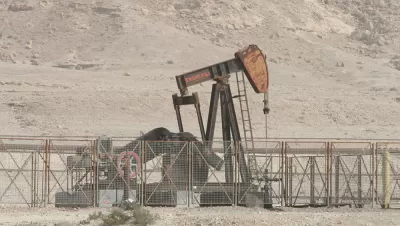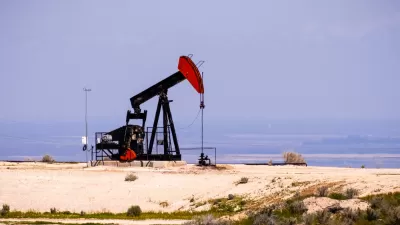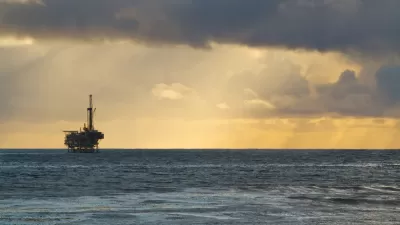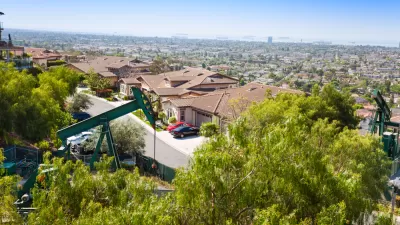Secretary Zinke's order is part of the "energy dominance" agenda of the Trump Administration to make the U.S. a major energy exporter. The order will reduce the time needed by the Bureau of Land Management to process permitting for new wells.

"Secretary Ryan Zinke’s order is the latest Trump administration effort to loosen restrictions on the fossil fuel industry and boost domestic oil and gas production," writes Dino Grandoni, energy and environmental reporter for The Washington Post and author of the Energy 202 newsletter
Boosting fossil fuel production is an integral part of what the administration now calls its "energy dominance” agenda, the new buzzword to replace the bipartisan "energy independence" goal, wrote Grandoni in May.
"Zinke said the aim of his order is to untangle the bureaucratic knot so the [Bureau of Land Management] BLM can review permit applications within 30 days, as mandated by statute," report Grandoni and Juliet Eilperin in a related article on the order issued July 6. Under the Obama Administration, processing time took more than seven times as long.
G-20 Summit
Energy dominance has become part of the Trump Administration's foreign policy toolbox, noted by the president himself, reports Grandoni in the July 6 "Energy 202" newsletter.
On Thursday, ahead of the G-20 meeting, Trump touted the promise of U.S. natural gas to a dozen Eastern European nations that attended the "Three Seas" regional summit, named after the Adriatic, Baltic and Black Seas that surround the countries. During a speech, he noted Poland's first delivery of U.S. [Liquefied Natural Gas] LNG in June.
The U.S. had officially crossed the threshold of being a net natural gas exporter last year thanks to the "Shale Miracle" of 2010, observed Planetizen editor James Brasuell last November.
Opening up California federal lands to drilling
"The state hasn’t seen new onshore oil and gas leases offered up on federal land in four years because of environmental fights," reports Kurtis Alexander for the San Francisco Chronicle. "The order [pdf] has some environmentalists fearing that de facto moratorium will soon end."
In California, the prime area for exploration is in Kern County, where most the of the state’s extraction is done now. The Bureau of Land Management also controls land in Tulare, Fresno, San Luis Obispo, Santa Barbara, Ventura and Monterey counties, where drilling could also expand.
One obstacle for Zinke will be local protections like Measure Z, approved by 56 percent of Monterey County voters last November that prohibits new drilling and potentially even existing drilling. Litigation followed, halting implementation of much of the measure, although the ban on fracking remains. It could take years to resolve.
Not looking good for "keep it in the ground" movement
"Environmentalists, who had far greater access to the Obama administration than they do to President Trump, predicted a gloomy future for federally owned open space," adds Alexander.
“This new directive could have far-reaching consequences," said Hollin Kretzmann, staff attorney at the Center for Biological Diversity, a group that has opposed drilling in California. "Even where you see no wells today, there’s potential for oil and gas activities to expand.”
FULL STORY: The Energy 202: Can Zinke boost more oil and gas drilling on public lands?

Planetizen Federal Action Tracker
A weekly monitor of how Trump’s orders and actions are impacting planners and planning in America.

Map: Where Senate Republicans Want to Sell Your Public Lands
For public land advocates, the Senate Republicans’ proposal to sell millions of acres of public land in the West is “the biggest fight of their careers.”

Restaurant Patios Were a Pandemic Win — Why Were They so Hard to Keep?
Social distancing requirements and changes in travel patterns prompted cities to pilot new uses for street and sidewalk space. Then it got complicated.

California Homeless Arrests, Citations Spike After Ruling
An investigation reveals that anti-homeless actions increased up to 500% after Grants Pass v. Johnson — even in cities claiming no policy change.

Albuquerque Route 66 Motels Become Affordable Housing
A $4 million city fund is incentivizing developers to breathe new life into derelict midcentury motels.

DC Area County Eliminates Bus Fares
Montgomery County joins a growing trend of making transit free.
Urban Design for Planners 1: Software Tools
This six-course series explores essential urban design concepts using open source software and equips planners with the tools they need to participate fully in the urban design process.
Planning for Universal Design
Learn the tools for implementing Universal Design in planning regulations.
Heyer Gruel & Associates PA
JM Goldson LLC
Custer County Colorado
City of Camden Redevelopment Agency
City of Astoria
Transportation Research & Education Center (TREC) at Portland State University
Camden Redevelopment Agency
City of Claremont
Municipality of Princeton (NJ)





























